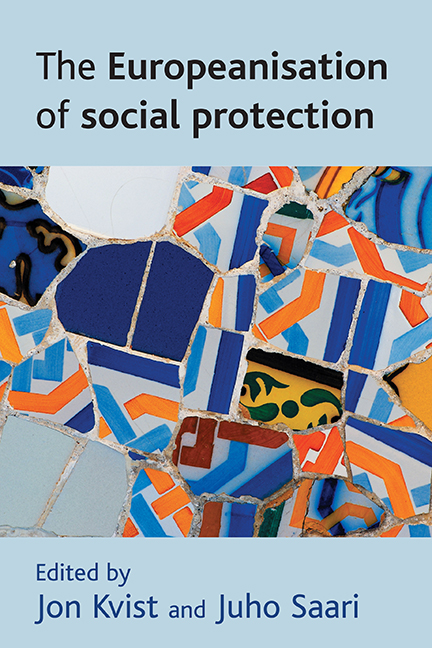Book contents
- Frontmatter
- Contents
- List of tables and figures
- Foreword: The European Union’s evolving social policy and national models – seeking a new balance
- Acknowledgements
- List of abbreviations
- List of contributors
- one European Union developments and national social protection
- two Germany: moving towards Europe but putting national autonomy first
- three The United Kingdom: more an economic than a social European
- four France: defending our model
- five Italy: between indifference, exploitation and the construction of a national interest
- six Poland: redefining social policies
- seven Spain: starting from periphery, becoming centre
- eight The Czech Republic: tradition compatible with modernisation?
- nine Finland: towards more proactive policies
- ten The Netherlands: social and economic normalisation in an era of European Union controversy
- eleven Denmark: from foot dragging to pace setting in European Union social policy
- twelve Greece: the quest for national welfare expansion through more social Europe
- thirteen The Europeanisation of social protection: domestic impacts and national responses
- fourteen Seeking a new balance
- References
- Index
eleven - Denmark: from foot dragging to pace setting in European Union social policy
Published online by Cambridge University Press: 15 September 2022
- Frontmatter
- Contents
- List of tables and figures
- Foreword: The European Union’s evolving social policy and national models – seeking a new balance
- Acknowledgements
- List of abbreviations
- List of contributors
- one European Union developments and national social protection
- two Germany: moving towards Europe but putting national autonomy first
- three The United Kingdom: more an economic than a social European
- four France: defending our model
- five Italy: between indifference, exploitation and the construction of a national interest
- six Poland: redefining social policies
- seven Spain: starting from periphery, becoming centre
- eight The Czech Republic: tradition compatible with modernisation?
- nine Finland: towards more proactive policies
- ten The Netherlands: social and economic normalisation in an era of European Union controversy
- eleven Denmark: from foot dragging to pace setting in European Union social policy
- twelve Greece: the quest for national welfare expansion through more social Europe
- thirteen The Europeanisation of social protection: domestic impacts and national responses
- fourteen Seeking a new balance
- References
- Index
Summary
The relationship between national social policy and the European Union (EU) is a recurrent theme in public debates throughout Europe. These debates are typically sparked by EU referenda, irrespective of their official theme, with Dutch and French polls on the European Constitution as vivid illustrations. Both entailed heated discussions of the impact of EU enlargement and European integration on national social policy. And both polls resulted in rejections of ratifying the Constitution.
In this context, changing Danish government responses to European integration in social policy may be of more general interest for at least two reasons. First, Danes have a reputation for being eurosceptics. Denmark holds the world record for the most EU referenda. In two out of six elections, Danish EU scepticism had the upper hand: in 1992 when 50.7% of the electorate voted against ratification of the Maastricht Treaty, and in 2000 when 53.2% rejected Denmark adopting the euro. The relationship between the Danish welfare system and a further deepening or widening of EU collaboration figured high in public debates surrounding all six referenda. Second, Denmark has a welfare model that in the late 1990s received praise from the European Commission and the Organisation for Economic Co-operation and Development (OE CD) for its active labour market policies and extensive social care schemes. Most recently, the model has been praised for the way it combines lax employment protection legislation (providing flexibility in the labour market) with generous social protection and active employment policies (providing social security). In a word, this combination has become known as ‘flexicurity’.
Changing Danish governments have aimed at calming a belief about potential negative consequences for national social policy stemming from EU collaboration, a belief particularly dominant on the Left side of the political spectrum. When Denmark joined the EU in 1973, together with Ireland and the United Kingdom, little EU social policy existed besides the coordination on migrant workers’ social rights. During its first 25 years in the EU, Denmark backed the line supporting national sovereignty in social policy, perhaps most notably spearheaded by the UK. Denmark was thus generally against an expansion of EU social policy initiatives, a behaviour that we may see as ‘foot dragging’ with respect to further European integration. In Edinburgh in 1992, when Denmark was exempt from participating in four areas of European collaboration, it also became a ‘fence-sitting’ nation.
- Type
- Chapter
- Information
- The Europeanisation of Social Protection , pp. 195 - 210Publisher: Bristol University PressPrint publication year: 2007

